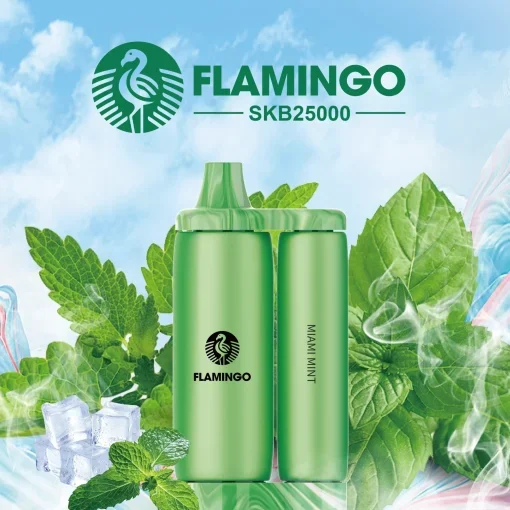90 Vape Shops in America Close Due to Vaping Fears
In recent years, the rising popularity of vaping has led to significant changes in the landscape of tobacco and nicotine use. However, amidst health concerns and regulatory scrutiny, a wave of closures has swept through the vape shop segment across the United States. This blog explores the factors contributing to the shuttering of approximately 90 vape shops nationwide as fear surrounding vaping intensifies.
The Surge of Vaping: A Double-Edged Sword
The vaping industry experienced meteoric growth over the past decade, bringing forth a new wave of nicotine delivery systems that many considered a safer alternative to traditional smoking. With innovative devices, enticing flavors, and a perception of reduced harm, vaping quickly gained traction, particularly among younger demographics.
However, as the popularity of these products surged, so did concerns over their safety. Reports of lung injuries and deaths linked to vaping prompted widespread alarm and corresponding reactions from public health officials. Suddenly, the very products that attracted customers began to signal a health crisis, prompting many to reconsider their participation in the vaping culture.
Health Concerns: The Catalyst for Change
One of the prominent catalysts for the closures of vape shops across America is the mounting evidence suggesting serious health risks associated with vaping. According to the Centers for Disease Control and Prevention (CDC), cases of E-cigarette, or Vaping, Product Use-Associated Lung Injury (EVALI) surged to alarming numbers in 2019, compelling both consumers and regulators to reevaluate the safety of these products.
In response to such alarming statistics, many states began implementing stringent regulations, including bans on flavored vape products that appeal to younger users. As the regulatory environment evolved, many vape shop owners found their businesses increasingly vulnerable, leading to a spike in closures.
Regulatory Pressures and Market Adjustments
Strengthened regulations have further complicated the operational landscape for vape shops. In addition to state-level measures, the federal government instituted policies that restrict the sale of flavored nicotine products and impose rigorous testing and labeling requirements. These regulations, although purposed with public health in mind, have placed significant financial strains on shop owners.
According to industry reports, around 20% of vape shops faced imminent closure following the introduction of new laws in their states. Business owners who once thrived in the rapidly expanding market are now struggling to adapt to these changes, leading to a cascade of closures.
The Impact of Public Perception
The perception of vaping has also shifted dramatically. Once viewed as a trendy lifestyle choice, vaping is increasingly seen as a public health hazard. Social media campaigns, coupled with news coverage of severe health impacts, have incited fear among consumers, leading many to abandon vaping altogether.
This change in public sentiment has had a detrimental effect on sales for vape shops. Customers who once flocked to stores are now reconsidering their choices, and many shop owners report dwindling foot traffic. As sales decline and overhead costs remain constant, many vape shops simply cannot survive.
Case Studies: Shops Closing Their Doors
In light of these factors, various vape shops across America have been forced to close their doors. A notable example is the "Vapeland" shop in California, which, despite once being a pillar of the local community, was unable to pivot its business model in response to changing regulations. Store owner Jane Doe stated, "It was heartbreaking to see my business fall apart. We tried to adapt, but the regulations were overwhelming."
Another example is "Cloud Nine Vapes" in Illinois, which prided itself on offering a wide range of products. Owner John Smith cited health concerns from his customers as one significant reason for the decline in business. "People are scared. It’s hard to promote our products when the public is so polarized," he mentioned in a recent interview.
The Future of Vaping and Vape Shops
The fate of vapor shops in America lies in a fragile balance between public health advocacy, regulatory action, and consumer perception. While some shops have adapted by shifting focus to more acceptable products, others continue to struggle with the stigma surrounding vaping.
As the industry evolves, innovation will be crucial. Vape shops that embrace transparency, quality control, and consumer education may have a fighting chance to navigate through the changing tides. Moreover, there is potential for a shift toward safer vaping products, as manufacturers explore new technologies and formulations to alleviate health concerns.
Community and Economic Ramifications
Beyond the immediate business impacts, the closures of vape shops carry significant community and economic ramifications. These shops often serve as local gathering spaces, fostering social connections and networks among users and non-users alike. The dwindling number of vape shops may result in a loss of community engagement and potentially drive former customers to unregulated or illicit markets.
The economic implications are profound. Many vape shops employ local workers, contribute to local taxes, and support other associated industries. With closures, communities may suffer from rising unemployment and reduced local economic activity, creating a ripple effect that extends beyond the businesses themselves.
Finding Solutions and Path Forward
Addressing the challenges faced by the vaping industry requires a nuanced approach that involves all stakeholders: consumers, shop owners, public health officials, and lawmakers. Collaborative efforts can lead to effective regulatory frameworks that prioritize public health without further jeopardizing the livelihoods of small business owners.
Education and awareness campaigns are also key to reshaping public perception and promoting responsible usage. By clarifying facts about vaping and its risks, there may be opportunities to develop a sustainable market for responsible consumers while keeping younger users at bay.
Final Thoughts
The closure of 90 vape shops across America underscores a critical moment for the industry, as health fears reshape consumer habits and regulatory landscapes. Understanding the evolution of vaping culture and its implications will be crucial as we look toward the future. As the smoke clears, the surviving shops that adapt to the changing market may still hold potential for growth amid a challenging environment.





